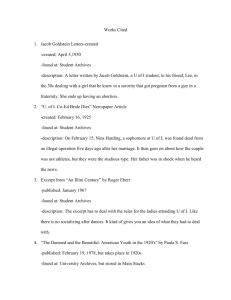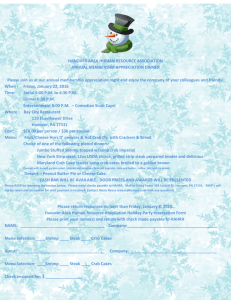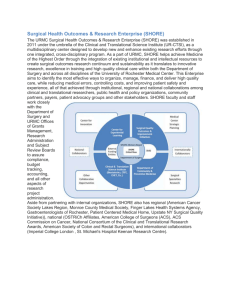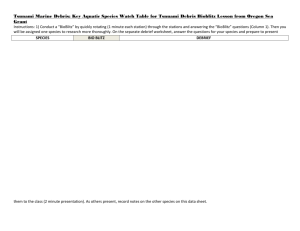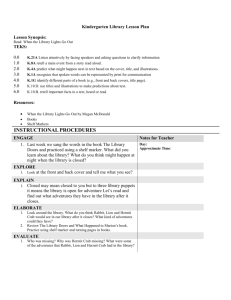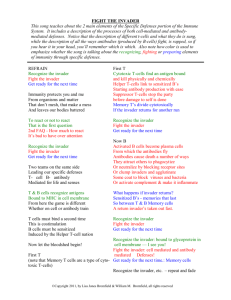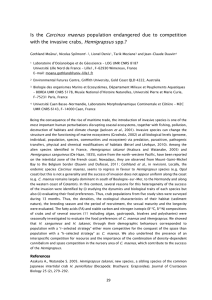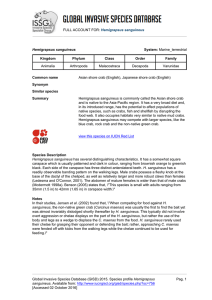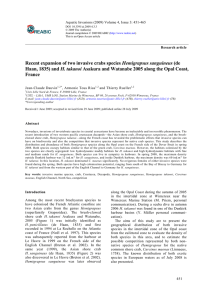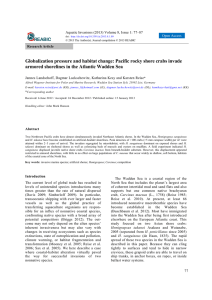BioBlitz suggested answers
advertisement
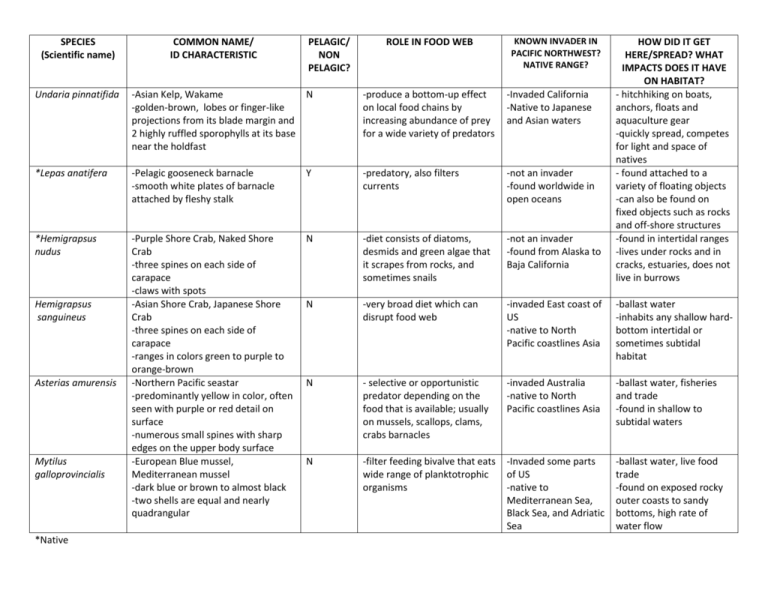
SPECIES (Scientific name) COMMON NAME/ ID CHARACTERISTIC PELAGIC/ NON PELAGIC? ROLE IN FOOD WEB KNOWN INVADER IN PACIFIC NORTHWEST? NATIVE RANGE? HOW DID IT GET HERE/SPREAD? WHAT IMPACTS DOES IT HAVE ON HABITAT? - hitchhiking on boats, anchors, floats and aquaculture gear -quickly spread, competes for light and space of natives - found attached to a variety of floating objects -can also be found on fixed objects such as rocks and off-shore structures -found in intertidal ranges -lives under rocks and in cracks, estuaries, does not live in burrows Undaria pinnatifida -Asian Kelp, Wakame N -golden-brown, lobes or finger-like projections from its blade margin and 2 highly ruffled sporophylls at its base near the holdfast -produce a bottom-up effect on local food chains by increasing abundance of prey for a wide variety of predators -Invaded California -Native to Japanese and Asian waters *Lepas anatifera -Pelagic gooseneck barnacle -smooth white plates of barnacle attached by fleshy stalk Y -predatory, also filters currents -not an invader -found worldwide in open oceans *Hemigrapsus nudus -Purple Shore Crab, Naked Shore Crab -three spines on each side of carapace -claws with spots -Asian Shore Crab, Japanese Shore Crab -three spines on each side of carapace -ranges in colors green to purple to orange-brown -Northern Pacific seastar -predominantly yellow in color, often seen with purple or red detail on surface -numerous small spines with sharp edges on the upper body surface -European Blue mussel, Mediterranean mussel -dark blue or brown to almost black -two shells are equal and nearly quadrangular N -diet consists of diatoms, desmids and green algae that it scrapes from rocks, and sometimes snails -not an invader -found from Alaska to Baja California N -very broad diet which can disrupt food web -invaded East coast of US -native to North Pacific coastlines Asia -ballast water -inhabits any shallow hardbottom intertidal or sometimes subtidal habitat N - selective or opportunistic predator depending on the food that is available; usually on mussels, scallops, clams, crabs barnacles -invaded Australia -native to North Pacific coastlines Asia -ballast water, fisheries and trade -found in shallow to subtidal waters N -filter feeding bivalve that eats wide range of planktotrophic organisms -Invaded some parts of US -native to Mediterranean Sea, Black Sea, and Adriatic Sea -ballast water, live food trade -found on exposed rocky outer coasts to sandy bottoms, high rate of water flow Hemigrapsus sanguineus Asterias amurensis Mytilus galloprovincialis *Native
